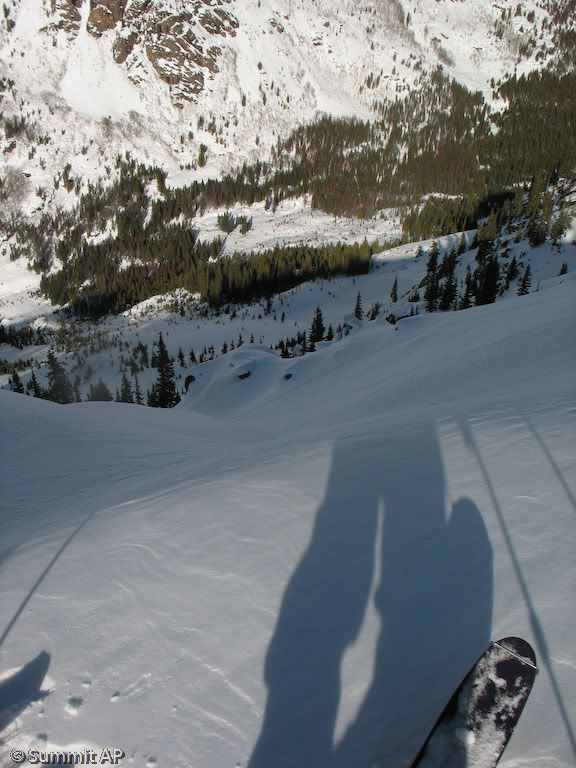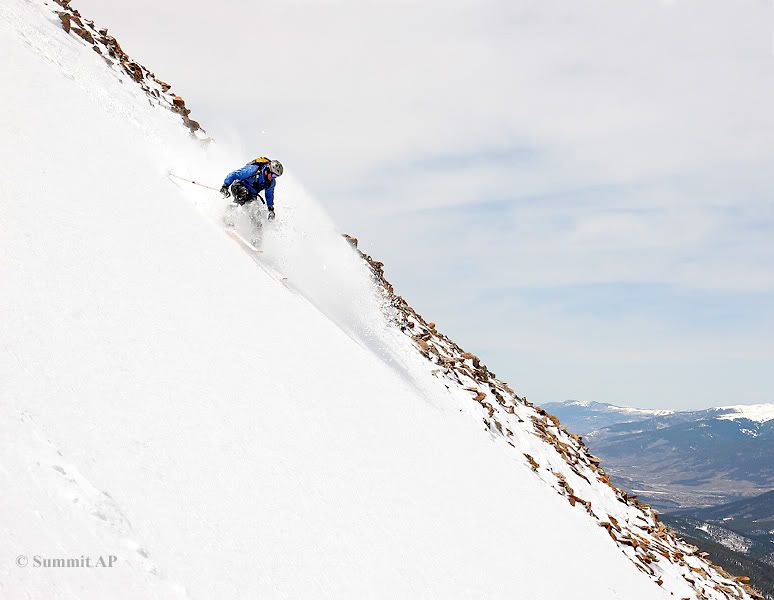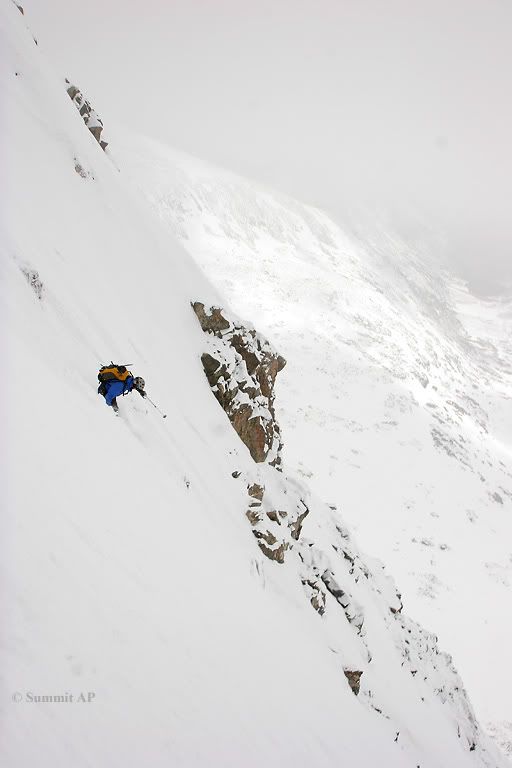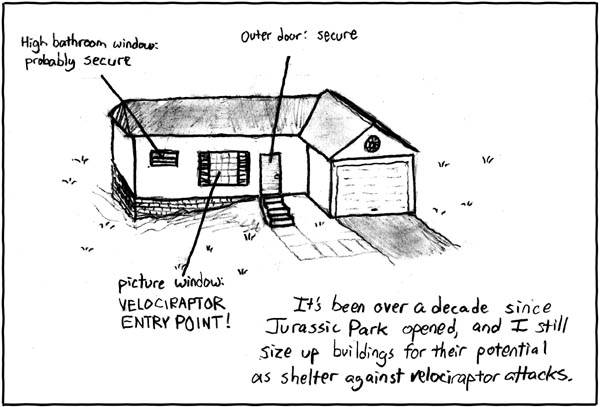IS THE RISK ACCEPTABLE?
Only you can decide what risk is acceptable. However, humans are awful at estimating risks and making risk part of the decision making process. I'm not going to tell you how to make decisions in this thread, but I am going to arm you with some tools to think about risk assessment that can help a great deal. Then you can more accurately decide if a risk is acceptable.
When your local avalanche center tells you the avalanche danger is forecasted at CONSIDERABLE, what do they mean and how do you use that to figure out risk? One can make a discussion of risk very complex with algorithms and rule based systems. There are mathematical risk reduction systems like Nivotest, Munter 3x3, and Avulatorthat come on plastic cards you can consult in the backcountry. There are even applications like AvaRisk for your smart phone to do the math for you.
I'll try to keep it simple. For starters, we are going to deal with words like HIGH and LOW, not numbers. We will discuss generalities, not snow pit results. This is simply a thinking methodology you can apply to any risk, not an avalanche safety algorithm. I'll supply a framework, then an example, and then add complexity. Remember, the examples are simplified, non-comprehensive, and imperfect.
What is RISK?
RISK = "What is the chance of an undesirable result?"
RISK = HAZARD x CONSEQUENCE
RISK = (Chance that an event will occur) vs. (What happens if the event occurs)
Obviously, risk evaluation can be done for many things from gear failure to lightning strikes. In terms of snow safety, you need to know several things to determine risk. Start with: how likely are what size avalanches? Your local avalanche center forecast gives you a generalized idea of the HAZARD!
How do you determine risk using the forecast? You fine tune the hazard forecast with your observations and experience, as it applies to your line. Then, you consider the consequences. Weigh the consequences against the hazard and you get risk! Let's try 4 examples!
Example #1: Deep in the Winter Backcountry!
Your target line is a steep rocky 1000m line 6 miles into the wilderness on a snowy February day in Colorado
CONSIDERABLE is the forecast. You found this to be the case where you are skiing: you consider the
stability to be fair, considerable chances of encountering a trigger point, and that if you do it will likely
be a sizeable slab avalanche.
RISK = (Chances I start a slab avalanche) vs. (Chances I am caught and injured/killed in the slide)
RISK = CONSIDERABLE hazard vs EXTREME consequence
RISK = HIGH
If you want to get slightly more complex...
RISK = HAZARD x VULNERABILITY x EXPOSURE
RISK = (Chance that event will occur) vs. (Likelihood of experiencing consequences if the event occurs) vs
(Consequences)
Example #2: Spring Steeps
It's spring and the snowpack is isothermal. It froze very solid and then snowed 10cm with no wind. You
are looking at a N line that is in the low 40deg for steepness at the top, quickly flattening out.
RISK = (Chance line sloughs) vs. (Chance slough will knock me down) vs (I lose a ski)
RISK = CONSIDERABLE hazard vs LOW vulnerability vs MODERATE exposure
RISK = LOW to MODERATE
If you want to get slightly more complex...
RISK = HAZARD x VULNERABILITY x EXPOSURE x UNCERTAINTY
RISK = (Chance that an event will occur) vs. (Likelihood of experiencing consequences if the event
occurs) vs (Consequences) vs (Uncertainty in estimations)
Example #3: EXTREME SKIING
It's spring and you saw a R5 (the entire slope) slide yesterday. It froze very solid and then snowed
10cm with no wind. You are an extremely skilled skier looking at a technical line in the mid 50s degs for
steepness. There is a 500ft cliff at the bottom of the line.
RISK = (Chance this line sloughs) vs. (Chance the slough will carry me) vs. (Slough carries me off the cliff
and I die) vs. (Uncertainty)
RISK = EXTREME hazard vs LOW vulnerability vs EXTREME exposure vs LOW uncertainty
RISK = MODERATE
Here is an example of an almost certain event that has the potential for extreme consequences.
However, a skilled skier should almost certainly be able to ski the line in a way that almost completely
eliminates vulnerability to slough. This is a great example of HOW a line is skied can change the risk immensely. A much larger risk is the skier making an error and falling down the
line and off the cliff. Another discussion for another thread: Are we more willing to accept risks where
the consequences arise from a failure in our skiing abilities vs our snow safety assessment skills?
Examples #4: Velociraptor Hazard - Excessive Conservatism
We should avoid allowing catastrophic possibilities of negligible likelihood from unduly distracting us in our decision making.
RISK = (Chance Velociraptors will hunt you) vs. (Chance Velociraptor catches you) vs. (Velociraptors eat
you alive) vs. (Uncertainty)
RISK = NEGLIGIBLE hazard vs EXTREME vulnerability vs EXTREME exposure vs NEGLIGIBLE uncertainty
RISK = NEGLIGIBLE
Last Thoughts
The above methods for thinking about risk can help us get a more accurate handle on our internal judgments. This is all fuzzy logic, not hard numbers. I personally am not a fan of rule based decision making because it puts too much faith in system and leaves out critical detail. At the same time, it is key to avoid overloading yourself when evaluating risk. Humans tend to either take shortcuts or get ANALYSIS PARALYSIS!
None of the above examples are complete or exhaustive. These are just thought exercises meant to somewhat improve inherently imprecise human risk estimation. There are many more twists. For example:
What if you introduce high uncertainty because the forecast doesn't match your observations?
What is an acceptable risk for you? How do you balance it to reward?
Do you prepare to deal with consequences?
I hope this thread was helpful! Please discuss!
And always remember, never get involved in a land war in Asia:

Results 1 to 14 of 14
-
01-25-2011, 05:19 PM #1
 Acceptable Risk? What is Risk??? (with pics)
Acceptable Risk? What is Risk??? (with pics)
Last edited by Summit; 05-25-2011 at 12:20 AM.
 Originally Posted by blurred
Originally Posted by blurred
-
01-25-2011, 05:27 PM #2gunit130 Guest
Driving to the resort or BC destination TH is likely a higher level of risk for injury than your upcoming backcountry experience.
and cool story bro!
-
01-26-2011, 10:29 AM #3
-
01-26-2011, 11:52 AM #4
This is a great thread. I really like the use of case studies and photos.
***
Is it necessary to take the broad themes of risk ( chance, consequences, exposure, uncertainty ) discussed in your post and accurately integrate detailed observations?
Or... do you think a case could be made for *not* integrating detailed observations if doing so increases the chance of errors?
The Avalanche Handbook discusses the role of redundant information as it relates to the accuracy of a forecast ( redundant information doesn't increase accuracy ).
Is it possible that the big picture of risk already accounts a lot of the finer details, but that us humans simply want to find exceptions and justifications?
-
01-26-2011, 12:51 PM #5
Great thread Summit. Very timely too, as I was just re-reading the "ABCs of Avalanche Forecasting" chapter in The Avalanche Handbook which gets into the three levels of decision makers (beginer, intermediate and expert) and the varying processes from (i) objective decisions to (ii) intutitive decisions. Cool to mentally apply some of the discussion points from that chapter to the above.
-
01-26-2011, 07:28 PM #6
Certainly so!
Thus I was cagey with the oversimplified examples put forth that either did not consider uncertainty or dealt with low uncertainty.
The key is to avoid that negative outcome from the consideration and keep it accurate failing towards safety...
I think that the big picture makes a set of standardized assumptions, but can be fine tuned. If we limit our tuning towards safety except where confidence is high, we can do ourselves a service. We err towards safety! If one abuses a reasoning system to justify desire, then we do ourselves a disservice by erring towards unacknowledged risk acceptance.Is it possible that the big picture of risk already accounts a lot of the finer details, but that us humans simply want to find exceptions and justifications?
As you mentioned the other day, not all tools apply to all levels of decision making.
Certainly so. There would be no change in accuracy.The Avalanche Handbook discusses the role of redundant information as it relates to the accuracy of a forecast ( redundant information doesn't increase accuracy ).
However, new information can improve the accuracy of a risk assessment, such as "this a slope of extreme consequence." The danger scale covers this a little bit in their travel advice column. I think looking at the picture closely, and for multiple types of risk, allows people to more closely consider what they are getting into when they might otherwise ignore certain risks or considerations. For example: looking at the avalanche risk and then looking at the skier error risk (and then again together).
Certainly conflicting information means increased uncertainty, which I think ought to increase the risk estimate! Originally Posted by blurred
Originally Posted by blurred
-
01-26-2011, 07:48 PM #7
Interesting conversation.
One thing that comes to mind is that consequences can be abstract or concrete.
Teaching the idea of being churned in a big avalanche as something to avoid (duh) is much different from the person who has been churned and does NOT want it to happen again.
That's why we use case histories, first-person accounts, and video to make it seem like, "yes, it could happen to me."
Just a little musing on consequences....
-
01-26-2011, 08:47 PM #8Hugh Conway Guest
meh, the biggest problem with "risk" in avalanches is data uncertainty and collection error. IMO the error bars for those often spread over a couple other risk categories. Hence the "too conservative" approach may be simply minimizing the tail risk.
-
01-26-2011, 09:12 PM #9
-
01-26-2011, 11:45 PM #10
Would it be useful to post some more example scenarios without the analysis and then let people post their risk estimates?
Many days, and more particularly, many places, that is the case!
It's the nature of the avalanche beast: an uncommon event of high consequence you are trying to predict with imperfect data on a highly variable dataset.
In example #3 extreme skiing, it's pretty easy to say "this 55 degree slope is almost certainly going to sluff" and know that 9 times out of 10, it is going to sluff.
In example #1, which is to me a no-go situation, you are faced with a slab avalanche: high consequences, but MUCH lower probabilities compared to the given of a very steep slope sluffing. I think that is a problem people run into when they say to themselves "'human triggered avalanches likely?' pfffft what the heck does 'likely' mean anyways? I haven't set off a slide!"
However, it is the large consequences which are the worry. The risk tail might seem negligable one day, but who skis just one day? 3σ isn't insiginificant when the consequences are extreme and you repeat the exercise hundreds or thousands of times. I'm pretty sure I remember Tremper addressing exactly this point.
However, this point is very hard for most people. They don't like numbers and on top of it, their definition of "likely" isn't the same as an avalanche forecaster's. Normalizing the abnormal vis a vis avalanche risk acceptance is a major problem. For those reasons, I think this framework for evaluating risk is useful because it puts a lot of focus on consequence and vulnerability, which naturally lends to focusing on major non-avalanche risks as well!
YES INDEEDY! And bringing that point home is really important like you said! In that spirit regularly meet people who, when I ask them to explain their thinking about consequences in the BC, they either have no concept of the true power of snow, or they haven't thought about consequences more indepth than, "Bob might get buried and then I'll just dig him up!"
I like to pose scenarios to people: "Say you broke your leg here. We are 1 mile in and 2000 vertical above the road... but there are five icefalls below us and no way to get a helicopter in except via longline. How long do you think it would take SAR to get here and get you out?" Suddenly, the mindset of "well a little slide wouldn't be a big deal because I can see town" changes a bit.
I put forth the same idea in companion rescue classes. I ask students: "you are learning today about the immediate rescue from a burial, but let me tell you about what happens in the next few hours..." and whip out a story to drive it home.Last edited by Summit; 01-27-2011 at 12:59 AM.
 Originally Posted by blurred
Originally Posted by blurred
-
01-27-2011, 09:09 AM #11
Summit, I'd love to see more examples to do my own analysis. This thread has been really helpful for a guy who only gets a handful of days in the backcountry each year.
-
01-27-2011, 06:40 PM #12
Actually, velociraptor risk analysis might be a going concern in the next few decades...as there is new research into genetically re-engineering the dinosaur genome and implanting an adjusted ovum into an ostriche.
See text below from University of south Florida:
SCIENTISTS CLONE DINOSAUR!
Posted on Monday, January 10th, 2011
By J.B. Smitts
GAINESVILLE, FL – Scientists at the University of Florida have successfully cloned a dinosaur, a spokesman from the university said yesterday.
The dinosaur, a baby Apatosaurus nicknamed “Spot,” is currently being incubated at the University of Florida’s College of Veterinary Medicine.
The scientists extracted DNA from preserved Apatosaurus fossils, which were on display at the university’s museum of natural science. Once the DNA was harvested, scientists injected it into a fertile ostrich womb.
“Ostriches share a lot of genetic traits with dinosaurs,” said Dr. Norman Trudell, a biology professor at UF and the project’s leading scientist. “Their eggshell microstructures are almost identical to those of the Apatosaurus. That’s why the cloning worked so perfectly.”
Those in the scientific community say the dinosaur cloning – the first ever of its kind – is a milestone for genetic engineering.
“I used to think this kind of thing could only happen in the movies,” said Dr. Sven Bjornsen, a UF chemistry professor. “But we’re making it happen right here in our lab. It’s astounding.”
The cloning attracted the attention of a wide variety of animal rights activists and religious groups. They claim that animal cloning is unethical and immoral.
PETA President Ingrid E. Newkirk criticized the scientists for performing potentially life threatening threats on a new species.
“These scientists brought an animal from the Jurassic age back to life – just to watch it suffer!” she said.
But Dr. Trudell doesn’t seem to be bothered by the activists’ quibbling. He says that the opportunities afforded by dinosaur cloning are endless.
Within ten years, we could repopulate the world with dinosaurs,” he said. “We could harvest them for civic service, law enforcement, or even mass transportation.”
“Imagine riding to work on a dinosaur,” he continued. “Wouldn’t that be incredible?”
As of press time, the dinosaur is in stable condition. Scientists plan to run more tests on him today."
--
--
--
--
So next time you're out in the woods....keep your ears and eyes peeled for cute but VERY hungry velociraptors."The reason death sticks so closely to life isn't biological necessity - it's envy. Life is so beautiful that death has fallen in love with it; a jealous, possesive love that grabs at what it can." by Yann Martel from Life of Pi
Posted by DJSapp:
"Squirrels are rats with good PR."
-
01-27-2011, 11:31 PM #13
 Registered User
Registered User
- Join Date
- Oct 2006
- Location
- denver
- Posts
- 1,863
I think the acceptability of risk is often determined in hindsight. As assumed risks pay off, one's tolerance for risk tends to increase accordingly. This progression is the single scariest part of backcountry skiing for me. On many levels, I envy those who have no desire or need to push the envelope.
I can't believe you are a rando racer because I look so much better in Lycra than you.
People who don't think the Earth is flat haven't skied Vail.
-
02-01-2011, 01:32 PM #14











 Reply With Quote
Reply With Quote





Bookmarks